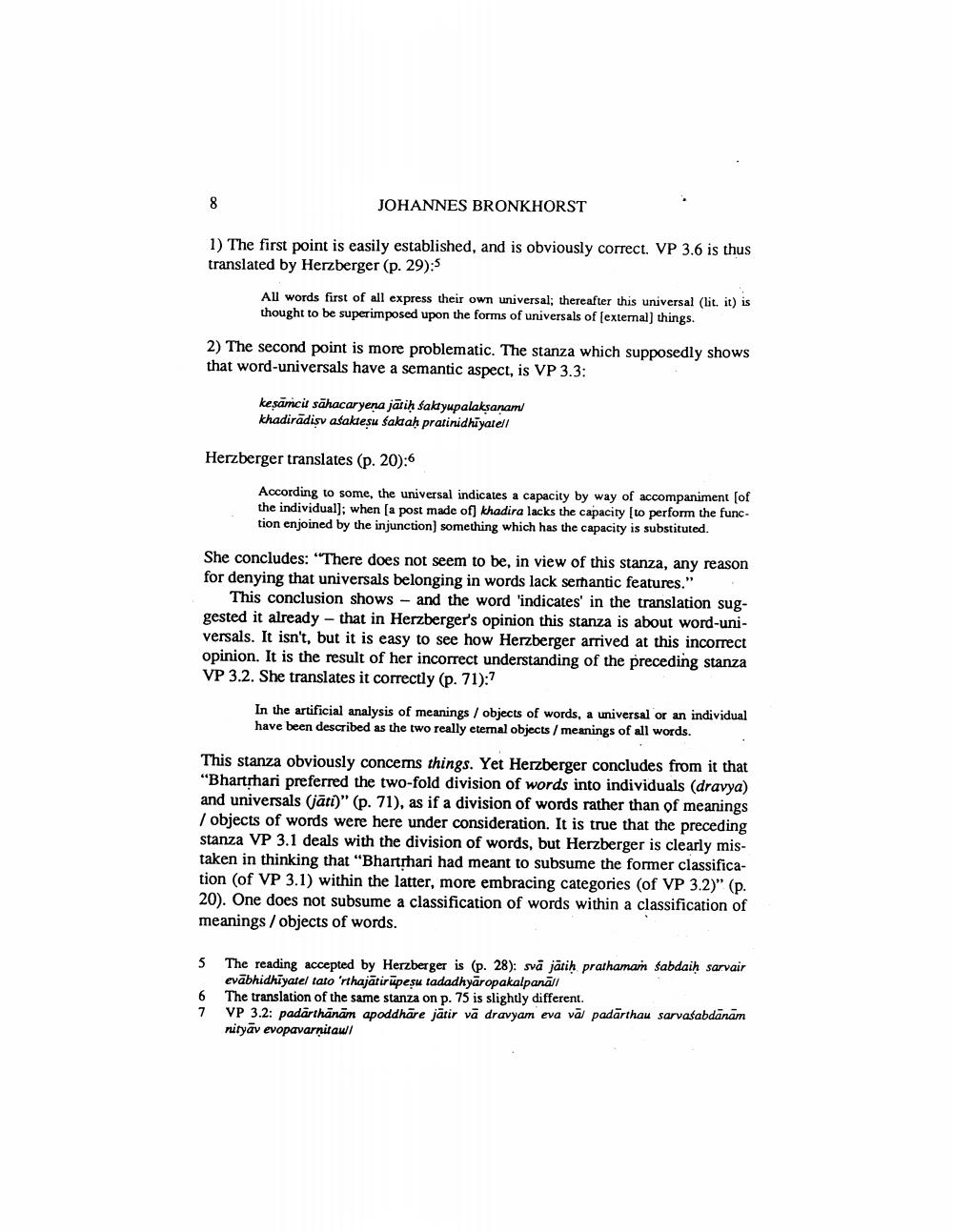Book Title: Studies On Bhartrhari 3 Author(s): Johannes Bronkhorst Publisher: Johannes Bronkhorst View full book textPage 4
________________ 8 JOHANNES BRONKHORST 1) The first point is easily established, and is obviously correct. VP 3.6 is thus translated by Herzberger (p. 29):5 All words first of all express their own universal; thereafter this universal (lit. it) is thought to be superimposed upon the forms of universals of [external] things. 2) The second point is more problematic. The stanza which supposedly shows that word-universals have a semantic aspect, is VP 3.3: keṣāmcit sähacaryena jätiḥ śaktyupalakṣanami khadirādiṣv aśakteṣu faktaḥ pratinidhiyate!! Herzberger translates (p. 20):6 6 7 According to some, the universal indicates a capacity by way of accompaniment [of the individual]; when [a post made of] khadira lacks the capacity [to perform the function enjoined by the injunction] something which has the capacity is substituted. She concludes: "There does not seem to be, in view of this stanza, any reason for denying that universals belonging in words lack serhantic features." This conclusion shows and the word 'indicates' in the translation suggested it already - that in Herzberger's opinion this stanza is about word-universals. It isn't, but it is easy to see how Herzberger arrived at this incorrect opinion. It is the result of her incorrect understanding of the preceding stanza VP 3.2. She translates it correctly (p. 71):7 In the artificial analysis of meanings / objects of words, a universal or an individual have been described as the two really eternal objects/meanings of all words. This stanza obviously concerns things. Yet Herzberger concludes from it that "Bhartṛhari preferred the two-fold division of words into individuals (dravya) and universals (jāti)" (p. 71), as if a division of words rather than of meanings /objects of words were here under consideration. It is true that the preceding stanza VP 3.1 deals with the division of words, but Herzberger is clearly mistaken in thinking that "Bhartṛhari had meant to subsume the former classification (of VP 3.1) within the latter, more embracing categories (of VP 3.2)" (p. 20). One does not subsume a classification of words within a classification of meanings/objects of words. 5 The reading accepted by Herzberger is (p. 28): svā jātiḥ prathamam sabdaiḥ sarvair evabhidhiyatel tato 'rthajatirupesu tadadhyāropakalpana!! The translation of the same stanza on p. 75 is slightly different. VP 3.2: padarthānām apoddhāre jatir vā dravyam eva val padarthau sarvasabdānām nityāv evopavarṇitau!!Page Navigation
1 2 3 4 5 6 7 8 9 10 11 12 13 14
